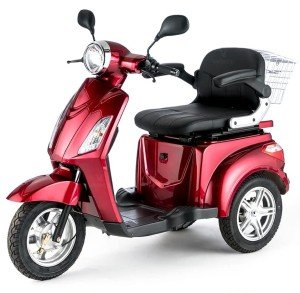Guide To Velco: The Intermediate Guide To Velco
페이지 정보
작성자 WH 작성일25-08-03 23:20 (수정:25-08-03 23:20)관련링크
본문
Velcro: A Revolutionary Fastening Solution
Introduction
Velcro, a name that has nearly ended up being synonymous with hook-and-loop fasteners, has revolutionized the method we consider fastening products. Frequently a staple in numerous industries and homes, Velcro uses a basic yet efficient solution to protect items without the requirement for buckles, buttons, or zippers. This post delves into the origins, systems, applications, and advantages of Velcro in addition to addressing some frequently asked concerns.
The Origins of Velcro
Velcro was developed in the late 1940s by Swiss engineer George de Mestral. After a searching trip in the Alps, Mestral became fascinated by the burrs that adhered to his dog's fur. Upon closer evaluation, he understood they functioned through a system of small hooks that ensnared anything with a loop, including fabric and fur. Acknowledging the potential of this natural fastening mechanism, Mestral embarked on a journey to recreate it in an artificial type. By 1955, he had patented his development, branding it "Velcro," a combination of the French words "velours" (velour) and "crochet" (hook).
How Velcro Works
Velcro consists of 2 different pieces: a hook side and a loop side. These 2 elements interlock when compressed, creating a strong bond that can be easily launched with a simple pull. The functioning of Velcro can be broken down into these primary parts:
| Component | Description |
|---|---|
| Hook Side | This side features small hooks that capture and keep loops. |
| Loop Side | This side includes soft loops created to yield to hooks when contacted. |
System of Fastening
- Interlocking: velco The hooks on one side capture the loops on the other, producing a physical interlock.
- Strength: The number of hooks and loops ensures a substantial holding strength, making it suitable for both light and durable applications.
- Reduce of Use: Velcro can be disengaged and re-engaged many times without losing its efficiency, setting it apart from more traditional fastening approaches.
Applications of Velcro
Velcro has actually discovered application across a myriad of sectors, consisting of:
Fashion Industry
- Sportswear
- Shoes (especially kids's shoes)
- Accessories (belts, bags)
Medical Field
- Orthopedic gadgets
- Plasters
- Prosthetics
Automotive and Aerospace
- Seat covers
- Interior linings
- Security equipment
Household Items
- Curtains
- Carpets
- Organizers
Industrial Use
- Cabling
- Devices fastening
- Tools storage
Advantages of Velcro
The appeal of Velcro can be credited to several advantages it offers over conventional securing approaches:
- Quick and Easy to Use: No tools are needed, making it user-friendly.
- Flexible: Works on numerous surface areas and products.
- Adjustable: Allows for easy adjustment in size (e.g., straps).
- Durable: Holds up under repeated use.
- Washable: Maintains its function even after washing.
Prospective Drawbacks
While Velcro is advantageous in numerous contexts, there are some limitations to be aware of:

- Noise: The noise of Velcro being pulled apart can be loud in quiet settings.
- Wear and Tear: Over time, excessive usage may lead to fraying or decreased effectiveness.
- Limitations with Heavy Loads: While it can hold considerable weight, it might not appropriate for incredibly heavy products.
Frequently asked questions about Velcro
1. Is Velcro waterproof?
Yes, Velcro can be made from water resistant materials, making it ideal for outside and marine applications.
2. Can Velcro be recycled?
Absolutely! Velcro is developed for repeated usage, and numerous items can be resealed and opened numerous times.
3. How do you tidy Velcro?
Cleaning Velcro is basic. You can use a lint roller or a soft brush to eliminate particles. For stubborn dirt, it might be rinsed carefully with water.
4. Is Velcro strong enough to change zippers?
In lots of applications, yes, Velcro can efficiently replace zippers, particularly in circumstances where quick attachment and unfastening are needed.
5. Exist various types of Velcro?
Yes, there are lots of types, including differing widths, colors, adhesive strengths, and products designed for different applications (i.e., high-temperature, outside, etc).
Velcro has proven to be a versatile and ingenious fastening option that has penetrated numerous sectors, enriching both everyday life and industrial applications. Its ability to provide a trustworthy and easy-to-use technique of attaching makes it an enduring component of modern style. From casual garments to sophisticated medical applications, Velcro continues to support its reputation as a staple fastening method for many usages. Whether it's for the fashion lover or an expert in the medical field, Velcro stays an unsung hero in the world of securing innovation.
By changing how we connect and secure products, Velcro is a testimony to the power of innovative thinking and simplicity in design. As innovation advances, we can only anticipate much more innovative applications for this exceptional innovation in the future.
댓글목록
등록된 댓글이 없습니다.

